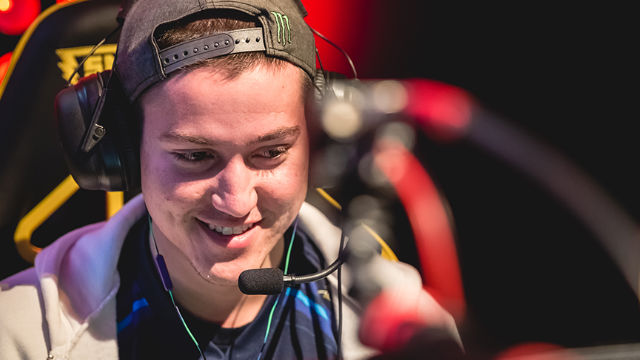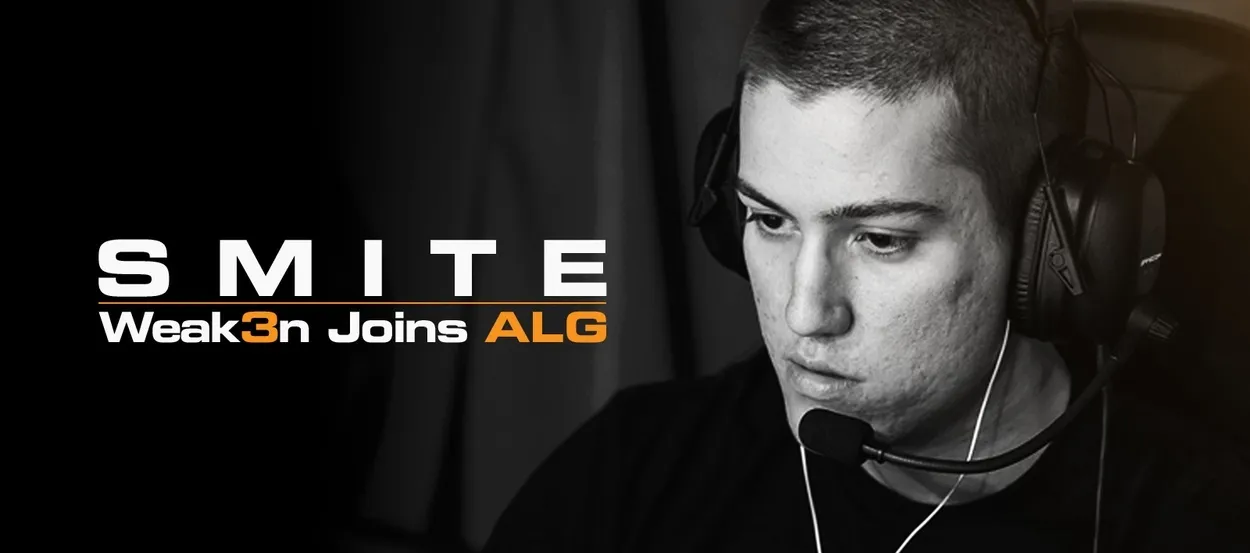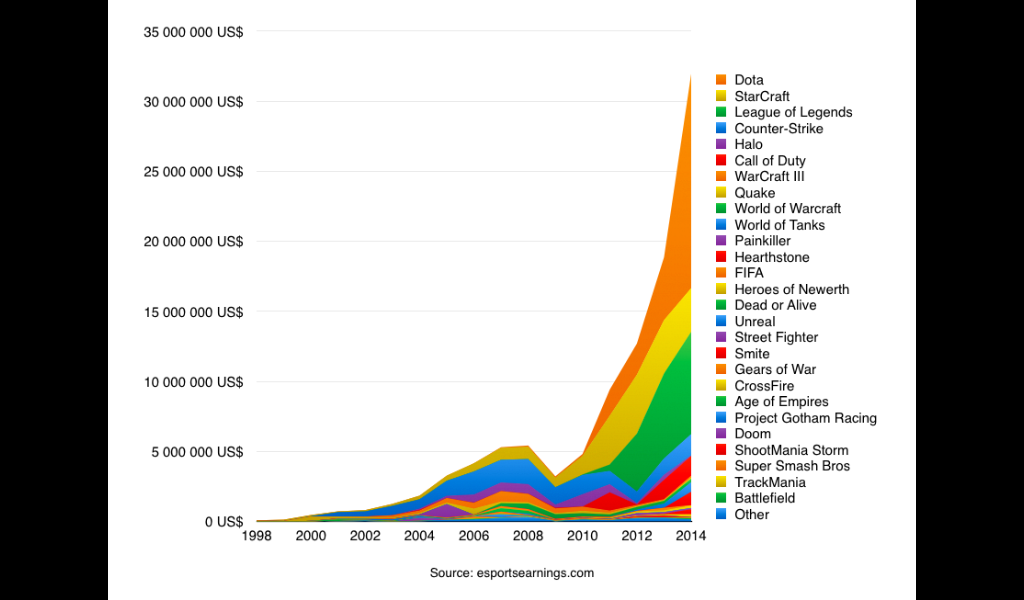Kurt “Weak3n” Schray is a 25-year-old professional SMITE player from Virginia. He’s represented a variety of SMITE teams throughout his career, and earned himself a championship title at the 2016 World Championships for Xbox as part of Team EnVyUS. In his competitive career alone, he’s earned over $40,000 — and has earned far more through creating content for the game via streams and the like.
In March of this year, Kurt opted to retire from the competitive gaming scene in order to concentrate on streaming. But his retirement didn’t last long, as he’s now the Jungler for Team Allegiance.
Recently, I had the pleasure of chatting with Kurt about his career so far, the future of SMITE as an eSport, and whether or not it can challenge the likes of big-name MOBAs like League of Legends and Dota 2.
GameSkinny: Hi Kurt. Thanks for chatting. Could you please tell our readers a little bit about yourself?
Kurt Schray: I am 25 years old, graduated in December with a Bachelors in Business management. I am getting married in spring of next year.
I started gaming pretty seriously when Halo 2 was released. This oddly enough led me into WoW, where I was a top 10 Warrior/Druid combo for seven seasons before moving over to SMITE. I now have been playing competitive Smite for four years, where I have multiple LAN wins on PC (which is what I’ve been playing the entire time and currently compete in), and I also have a World Championship on Xbox Smite which I played for only two months.
I consider myself a competitive gamer, then a streamer, and then a YouTuber. I got into content creation because of the community aspect of it.
How did Kurt get the moniker he uses in the SMITE pro scene? Turns out, it dates all the way back to his time playing Halo.
KS: My name “Weak3n” came from the Halo 2 days. I am a very vocal person; however, when I was younger I mumbled a lot. While making low health callouts, I would say they were weak or weakened, which would sound more like weaken. I like having things stand out, so I put a 3 in there instead of the e.
GS: How much would you say eSports have changed from when you started out compared to now?
KS: From when I first got into video games? It is 100% easier to get into the competitive part of just about any game with a competitive scene. Back when I was younger I had no clue where to even begin — these days you can Google your specific game and learn about an upcoming tournaments, both pro and amateur. There is also a lot more support from the game developers, communities, and from the companies that have begun to invest into eSports as a whole.
GS: Is competitive gaming profitable in the long run for someone looking to make money? The top eSports athletes have won millions from competing, which is obviously a big factor for many people. Or do you firstly need that passion to play games where you would want to be a professional gamer even without the money?
KS: The bigger games definitely are [profitable] if you are in a top team. As you get away from the top three or so games, you start to meet that line of is the time worth the money you are making. You definitely do not want to jump into games and try to make it professional.
If it’s your dream or your goal, you should do it as a hobby. Work during the day and then play the game for 6+ hours each night and see if you can make it. As you start to make it, you can drop those other responsibilities.
As for me, I would not make anywhere near enough just playing SMITE competitively. If I did not have streaming and YouTube, I would have a normal day job as well.
GS: Do you think in the future you could earn enough from playing SMITE competitively? Will the pro scene for the game ever be able to challenge the likes of League of Legends and CS:GO in terms of popularity?
KS: It comes down to what “enough” is for you, right? Let’s say your average player (finishing 4-5 each split) is getting on average $5k a split — so $15k from winnings in a year. On top of that, say the average player is getting $800/month salary. So around $24k at the end of the year before taxes. Take away that 30% in taxes and you are making somewhere around $17,000 a year.
Most players are putting in four hours of gameplay and four hours of team practice five or six days a week. When you compare this to a job making $10 an hour, it doesn’t really equal out. I don’t know specific numbers for other games around this size; however, I do know it’s not too much different.
I don’t see SMITE ever being that big at all. LoL was free to play at the right time, and gained a massive base because of that. CS is such an easy game to follow and get into. SMITE takes months to learn and wasn’t first. It will always have its niche place in the gaming world, but will never be that big.
GS: Have you ever considered switching to playing games like LoL or Dota 2? Obviously that is where the money and popularity is at the moment.
KS: I simply don’t enjoy the games enough to switch to them. Obviously it would be nice, but I know how long it took me to get to this level of SMITE and how much I had to learn. I don’t have interest in doing that again at all. I am always on the lookout for new games to compete in.
For me, I have always been a shooter type of guy. I play PUBG and actually won a game in the recent charity tournament. I would kill for that game to have a competitive scene to get into. It just comes down to the love of a game for me to push myself to be a top competitor.
GS: Are you happy with the SMITE developers? Is there anything you think they can do to improve the game or promote it to a wider audience?
KS: I think the SMITE developers are killing it. They add new content insanely quick, take a lot of feedback, and are really doing an amazing job.
In terms of promotion, there is always a way to further promote a product. Most people that aren’t on Twitch have no idea what SMITE is. I have a lot of real life friends who know about LoL, Rainbow Six, CoD, but have never heard of SMITE. I believe it’s hard to promote just because it’s the only one of its kind, and the game takes time to get into. So you can promote these awesome gods, art, and graphics…but when people first see it played, they get lost.
GS: Do you think gambling in eSports is a problem? There are now lots of websites offering audiences the opportunity to bet on eSports, and there have been stories recently of players intentionally throwing games in order to make money from betting. How do you feel about this?
KS: I think gambling will greatly increase the viewer bases of all games. Which will be a very good thing. However, there needs to be immense detailed laws regulating it, and rules in place to make players avoid that side of the eSport.
GS: Where do you see yourself this time next year, three years from now, or five years from now?
KS: Next year I will still be competing in SMITE and streaming as I do now. I have already started to branch out my stream and content into other games, so three years from now I will probably be streaming just a different game that I get deeply into.
Five years from now, I will hopefully be looking at working behind the scenes in eSports. I hope to get a job with Twitch, YouTube, or managing a major eSports organization. I know a lot about everything that goes on — from players, to organizations, to the people running the games — so I believe I would excel anywhere in the eSports world because of my experiences.
GS: Finally, are eSports the future of sports? Can they rival traditional sports such as football, tennis, etc? What skill sets does someone need in order to become a successful eSports athlete?
KS: eSports are already beginning to compete with traditional sports in terms of followings, viewership, and overall growth. That is why you see these football clubs and NBA teams getting into the eSports world now, as it is taking off.
I do not consider competitive gamers athletes either. To become a competitive gamer, it takes a lot of the same things being a pro athlete does, it’s just not as physically demanding — which is why I do not consider them the same. In eSports, you need good hand-eye coordination, quick thinking, insane decision making, keep your body healthy (not in crazy shape), and continually learn/adapt. All these things are what gets you to the skill level — and sometimes it takes a bit of luck to make it at the highest level.
I’d like to thank Kurt for taking time out of his schedule to chat with me about his perspective on the SMITE pro scene and eSports at large. To keep up with Kurt as he tries to get his Allegiance team to the SMITE Worlds stage, you can follow him on Twitter or check out his Twitch channel.
Stay tuned to GameSkinny for more awesome SMITE and eSports content!









Published: May 19, 2017 09:12 am